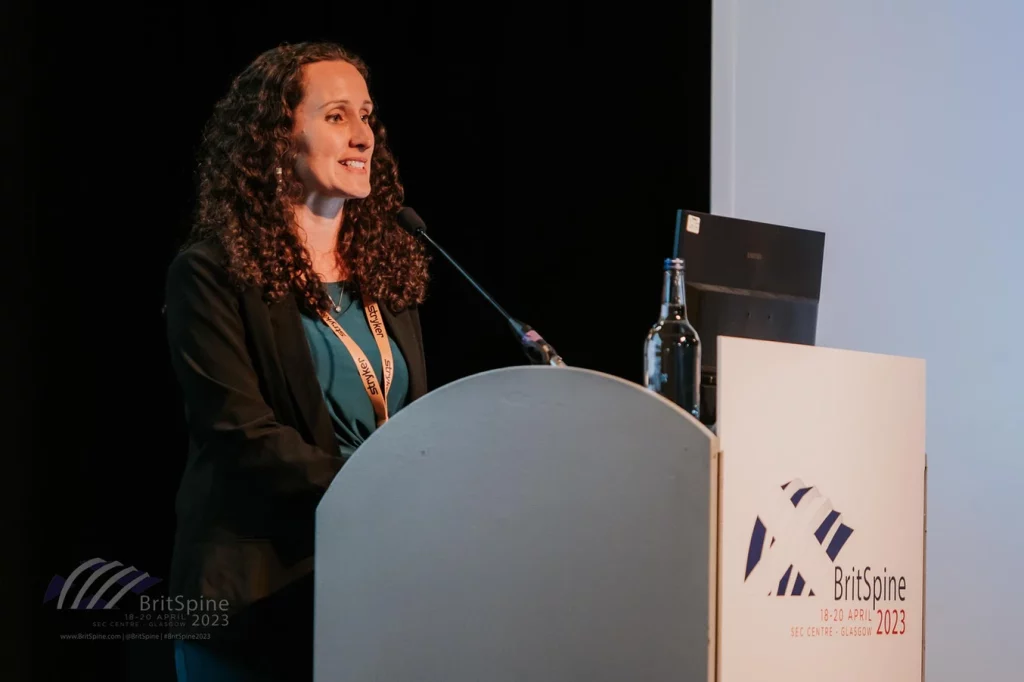Exeter Collaboration for Academic Primary Care (APEx) Blog
Exeter Collaboration for Academic Primary Care (APEx) Blog
Posted by ma403
15 March 2024This post-doctoral fellowship is funded by the NIHR School for Primary Care Research. It is led by Dr Lianne Wood and brings together a multi-disciplinary team of researchers across the Universities of Exeter and Cambridge, as well as public and patient advisors from the Charity Myelopathy.org. This research fellowship aims to explore the early signs and symptoms of degenerative cervical myelopathy in primary and community care, and the facilitators and barriers to diagnosing degenerative cervical myelopathy.
Why are we doing this research?
Degenerative Cervical Myelopathy (DCM) is the leading cause of spinal cord dysfunction. It is usually caused by acquired stenosis of the cervical spinal canal due to disc and/or osteoarthritic degeneration. DCM is most common in those over the age of 65 years. Over 70% of older individuals demonstrate radiological evidence of cord compression, and around 25% of these develop symptoms of DCM. It is estimated that fewer than 10% of those with DCM are diagnosed. If left untreated, DCM can lead to progressive disability and paralysis due to chronic spinal cord compression. The impact is far-reaching, with costs of £0.7 billion per annum to UK society for those with known disease. Further, those with DCM report the worst quality of life scores across all chronic disease.
People with DCM report difficulty accessing a diagnosis and resultant treatment. It is estimated that delays to diagnosis and treatment are between 3-5 years, and half of this time is between onset of symptoms to referral. People with DCM tell me there was a lack of awareness of DCM by their primary and community care practitioners and emergency care physicians, and this, coupled with the wide range of presenting features, may have contributed to the delays experienced. Surgery is recommended for those with progressive, moderate, or severe disease. However, surgery aims to stop progression of symptoms. As this condition naturally deteriorates over time, the impact on individuals and their likelihood for recovery post-operatively is poorer the later it is diagnosed.
What is the aim of this research?
The aim of this project is to identify early features of DCM, alongside strategies to optimise early recognition, diagnosis and resultant management for patients and clinicians in primary and community care.
What will we do?
This study has two work streams. In the first workstream, I will use routinely collected data from the Clinical Practice Research Datalink to identify early presentations of DCM using retrospective data over five years before surgery or diagnosis for DCM. I will use a recently published systematic review which describes the frequency of symptoms associated with DCM to code the likely symptoms. I will then explore the diagnostic utility of these symptoms in those with a diagnosis of DCM compared to those without in a matched case-control study.
In the second work stream, I will explore facilitators and barriers to diagnosis in primary and community care through qualitative interviews with various stakeholders across the care pathway. This will likely include primary and community care practitioners, emergency care practitioners, neurologists, neuro-and spinal-surgeons, triage practitioners and people with lived experience of DCM.
I will use this information to guide the next steps of my research which may include the development of diagnostic criteria for DCM.
How will this make a difference?
The results of this research will help to guide the assessment and management of DCM in primary and community care by identifying key clinical features that may suggest the need for an early cervical Magnetic Resonance Image. This will help to improve the clinical pathway for patients with suspected DCM, and reduce time to diagnosis in those with DCM.
I will work closely with our patient and public co-applicants to ensure that the research is patient-relevant, and that the outputs are disseminated in a patient friendly manner.
